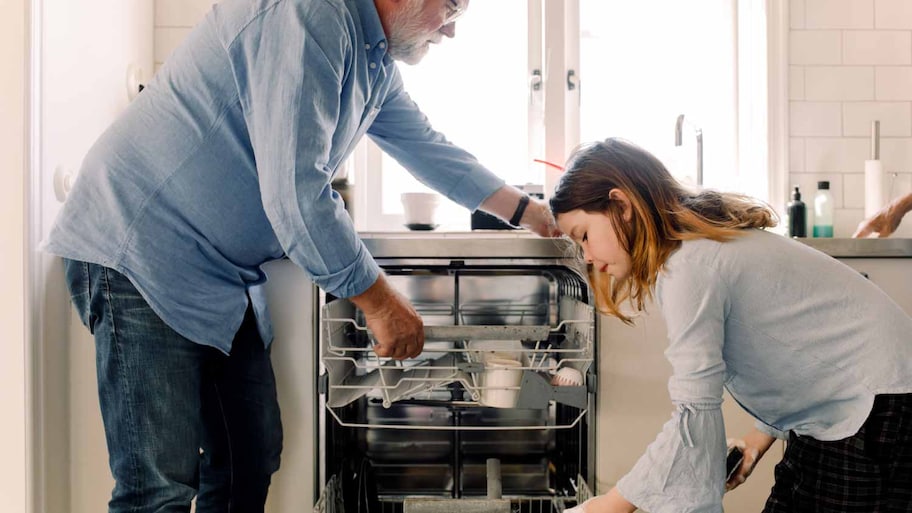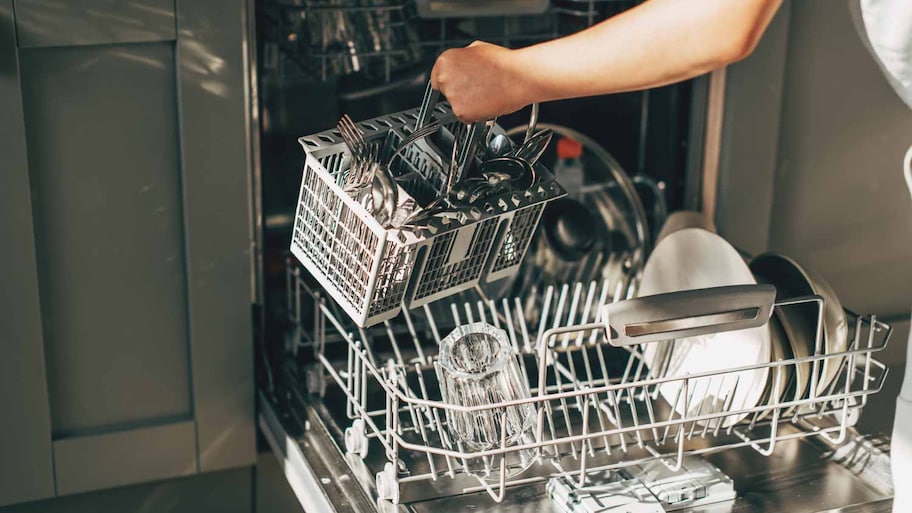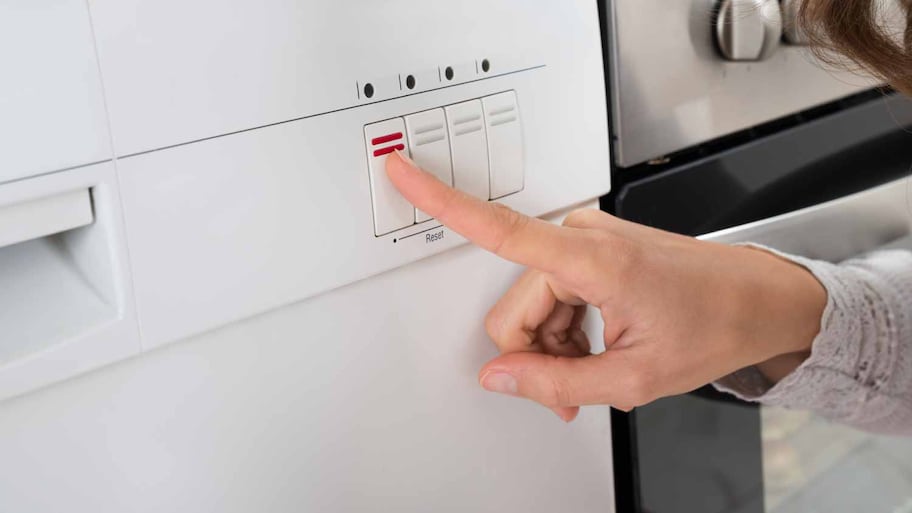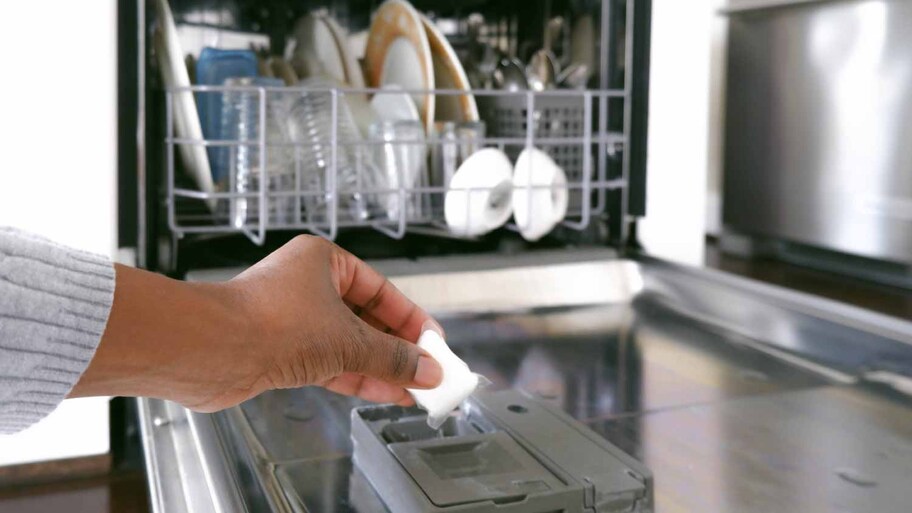Dishwasher Not Cleaning? Reasons Why and What to Do
Get your kitchen’s MVP back to cleaning in no time


Highlights
Dishwashers need cleaning, too.
Using too much detergent can cause buildup.
Poorly loading a dishwasher can limit the impact of water and soap.
Watch for broken inlet valves and soap dispensers.
It costs about $200 to repair a dishwasher and $1,200 to replace it.
Dishwashers make our lives a little bit easier by lightening our workload in the kitchen. While the dishwasher plays a pivotal role in day-to-day life, it’s easy to take this appliance for granted—until it stops working. There are several common, easily addressed reasons why this trusted appliance loses its efficiency. Whether the dishwasher is not draining or you’re seeing speckled glasses after a full cycle, one of these six factors might be the culprit.
Why Your Dishwasher Is Not Cleaning Properly
A dishwasher’s supposed to make your life easier by making your dishes and cutlery sparkling clean. When plates come out plastered with food scraps, it’s a sign something’s wrong with the appliance.
The solution could be as simple as giving the machine a thorough scrub or swapping out your detergent. Other issues, like replacing an inlet valve or changing the soap dispenser, could be more involved. Here are common reasons why your dishwasher isn’t cleaning.
1. Dirty Interior or Filter

Our appliances work hard for us, and it can be easy to forget that they need cleaning, too. Sometimes, getting your appliance back to tip-top shape can be as simple as knowing how to unclog a dishwasher. Over time, food fragments, detergent residue, and mineral deposits from hard water can accumulate in the crevices of your dishwasher, blocking filters, spray arms, and even the heating element.
If your filter and arms are dirty, the additional debris has nowhere to go. It accumulates on the sides, top, and bottom of the dishwasher—and probably your dishes too. This is especially common if you have hard water. (A few signs that indicate you may have hard water include higher utility bills and fabrics that fade in the wash.)
Vinegar and baking soda are affordable household supplies that can quickly clean your dishwasher. Fill a dishwasher-safe bowl with 1 cup of vinegar; place it on the bottom rack and run a hot cycle. Then, remove the bowl and sprinkle baking soda on the bottom of the dishwasher before running a short rinse cycle.
2. Wrong Type or Amount of Detergent
All detergent isn’t created equal when it comes to dishwashers. The average dishwasher detergent is made up of a blend of detergents, rinse aids, and enzymes. It’s easy to use too much detergent, which can cake onto parts of the dishwasher, making it less efficient over time. Depending on the type of dishwasher, tablets and pods—which are premeasured—are your best bet to avoid using the wrong type of or too much detergent.
Pro tip: It’s an extra step, but adding a rinse aid to your dishwasher can help reduce hard water mineral deposits—a plus for your dishes and dishwasher.
3. Poor Loading Technique
It might seem tedious, but it’s a best practice to load your dishwasher based on the manufacturer’s recommendations. Dishwashers all do the same thing, but their inner workings can vary. Be mindful not to block spray arms from reaching across the machine, and avoid overlapping or stacking dishes. This way, they have a chance of getting properly cleaned.
Rinse your dishes before loading the dishwasher. This will lessen the chance for food particles to get lodged in your dishwasher’s essential areas.
4. Wrong Cycle

When loading your dishwasher, consider what you are putting into it because the cycle you choose does matter. Get to know your dishwasher’s different cycles and how they work with your dishes. (Again, you may want to reference the manufacturer’s manual.) Typically, dishes that are heavily soiled need a heavy-duty cycle, while dishes, like fine china or wine glasses, require a delicate cycle.
5. Incorrect Water Temperature
Water temperature and pressure are essential for a dishwasher to be effective. Your dishwasher should generate water that’s about 120 degrees for best results. Hot water plays an important role in the cleanliness of your dishes. It helps the detergent dissolve properly while fighting grease. Weakened water pressure can impact the effectiveness—all the way down to the detergent. Without proper water pressure, detergent can’t activate and the wash and rinse cycles are useless. Figure out why your dishwasher is not getting water to alleviate the issue.
6. Obstructed or Clogged Spray Arm
The dishwasher’s spray arm rotates at the bottom of the washing machine. It sprays water on dirty dishes, dislodging debris, washing, and rinsing them.
If you tend to load your dishwasher with larger items, such as pots and pans, an obstructed spray arm could be the reason your dishes aren’t clean. But if the arm isn’t blocked but your dishes still aren’t clean, the spray arm could be clogged. This is especially true for an older dishwasher or if you live in an area with hard water. If the spray arm is clogged, it can’t spray the high-pressure water that cleans everything.
To unclog your sprayer arm, you’ll need to remove it and soak it in warm water and vinegar to dissolve those pesky mineral deposits.
7. Broken or Failing Inlet Valve
Your dishwasher’s inlet valve has an important job—it allows water to flow into your dishwasher. A broken inlet valve may cause your dishwasher to leak and flood the surrounding area. If you hear a loud knocking or hammering noise during the wash cycle, be sure to check it out, as it may mean this part is failing. Your manufacturer’s manual should include information on how to replace the valve, but if repairing this yourself is out of your scope, don’t hesitate to call in a pro.
8. Broken Soap Dispenser

A broken soap dispenser can keep detergent from releasing at the right time in the cycle—or at all. Hot water helps with cleanliness, but you need detergent for a true clean. Often, there are three main reasons for an ineffective soap dispenser, including:
A jammed dispensing door: This can be fixed by cleaning out the dispenser with vinegar and hot water, and then wiping the door springs with a small brush.
A broken dispensing door: If this is the case, you’ll need to replace the part or hire a local dishwasher service pro to fix the issue.
A cracked gasket: Rubbing a little petroleum jelly around the dishwasher’s gasket can help. It’s not a permanent fix, but it can extend the part’s life until you can replace it.
DIY Troubleshooting a Dishwasher vs. Hiring a Pro
"When it comes to appliances, you have to consider the extent of the issue. If it is minor problems or something that simply requires maintenance, then it might be more cost-effective to do a repair. If the failure is a major component of the appliance, then it will likely be easier and more affordable in the long run to just replace it and get peace of mind."
— Josh Rudin, Owner at ASAP Restoration LLC, Tempe, AZ
Just because your dishwasher’s job is to clean, that doesn’t mean it doesn’t deserve a cleaning of its own. If you notice your dishes aren’t sparkling, try troubleshooting using the above suggestions on your own.
For simple fixes like cleaning a filter or unclogging a spray arm, you should feel comfortable tackling them on your own. They won’t take more than a gentle scrub or two to resolve. But if it involves the plumbing around the sink, like replacing the inlet valve, it may be time to have your appliance professionally repaired or replaced. If you’re not experienced with plumbing, fixing a valve will likely lead to more damage than repair.
Dishwasher repair averages $200, depending on the type of repair needed. The average dishwasher installation costs approximately $1,200 but depends on the type of dishwasher you buy and the complexity of the installation.
Staci Parks contributed to this piece.
